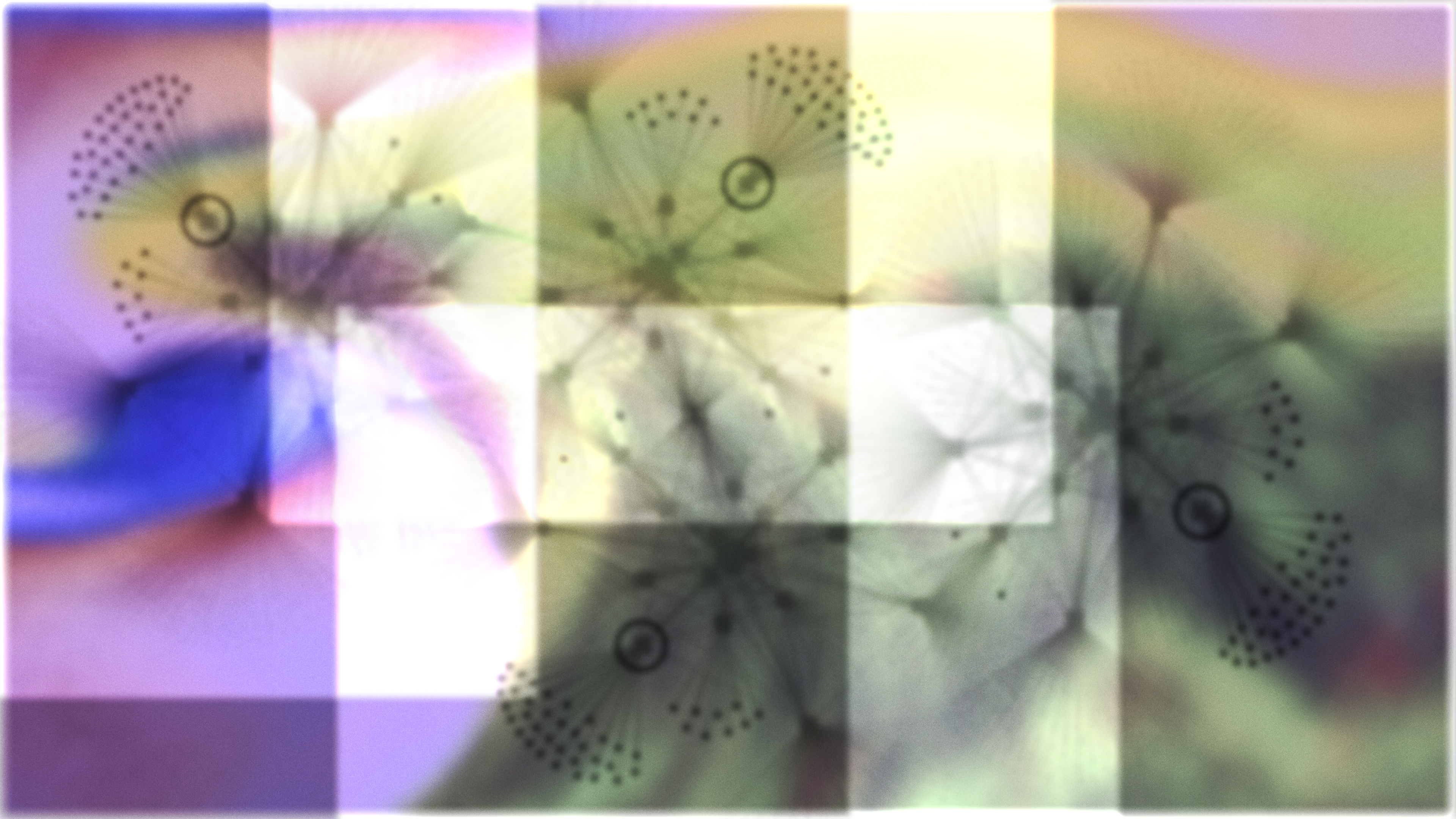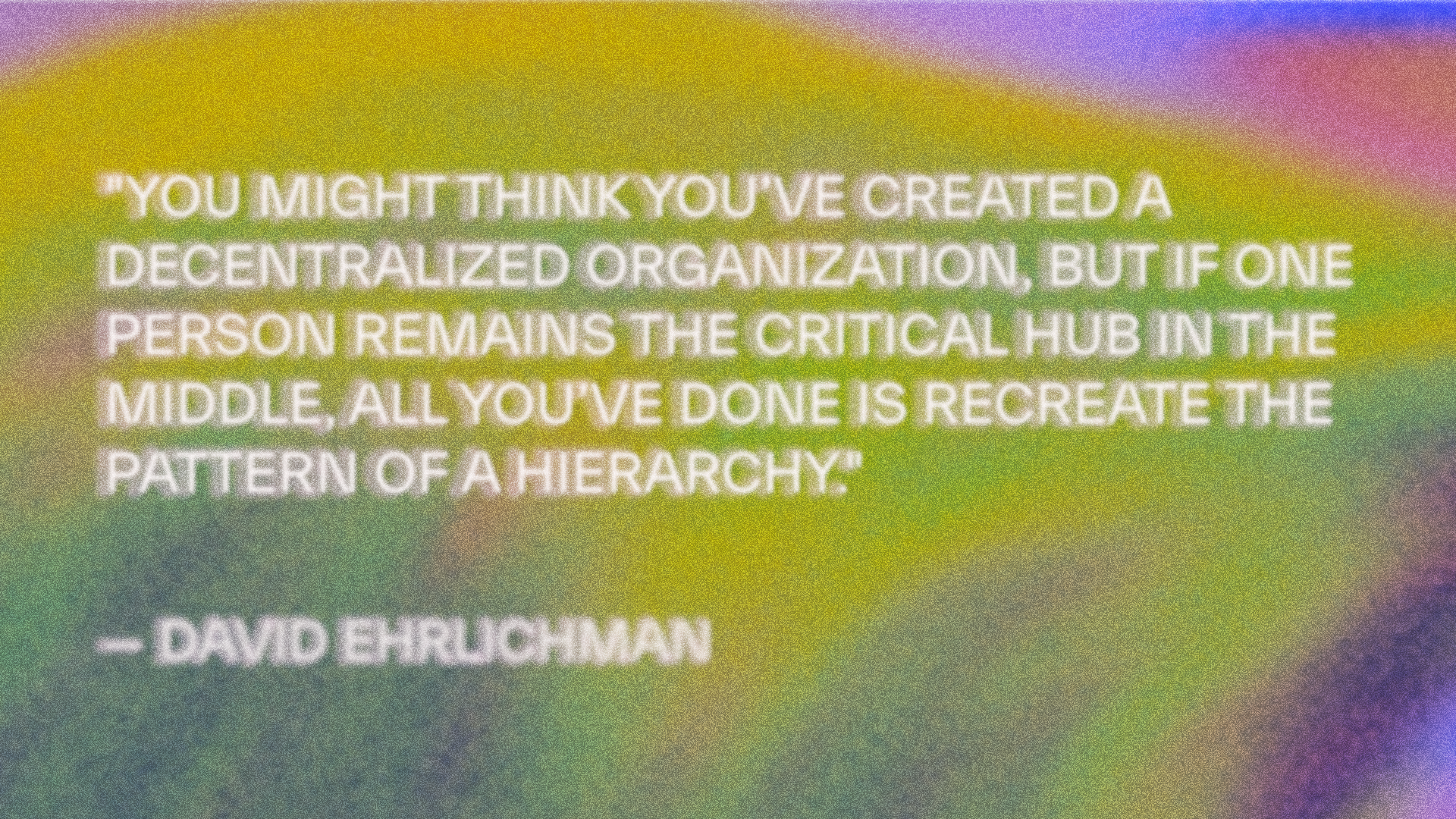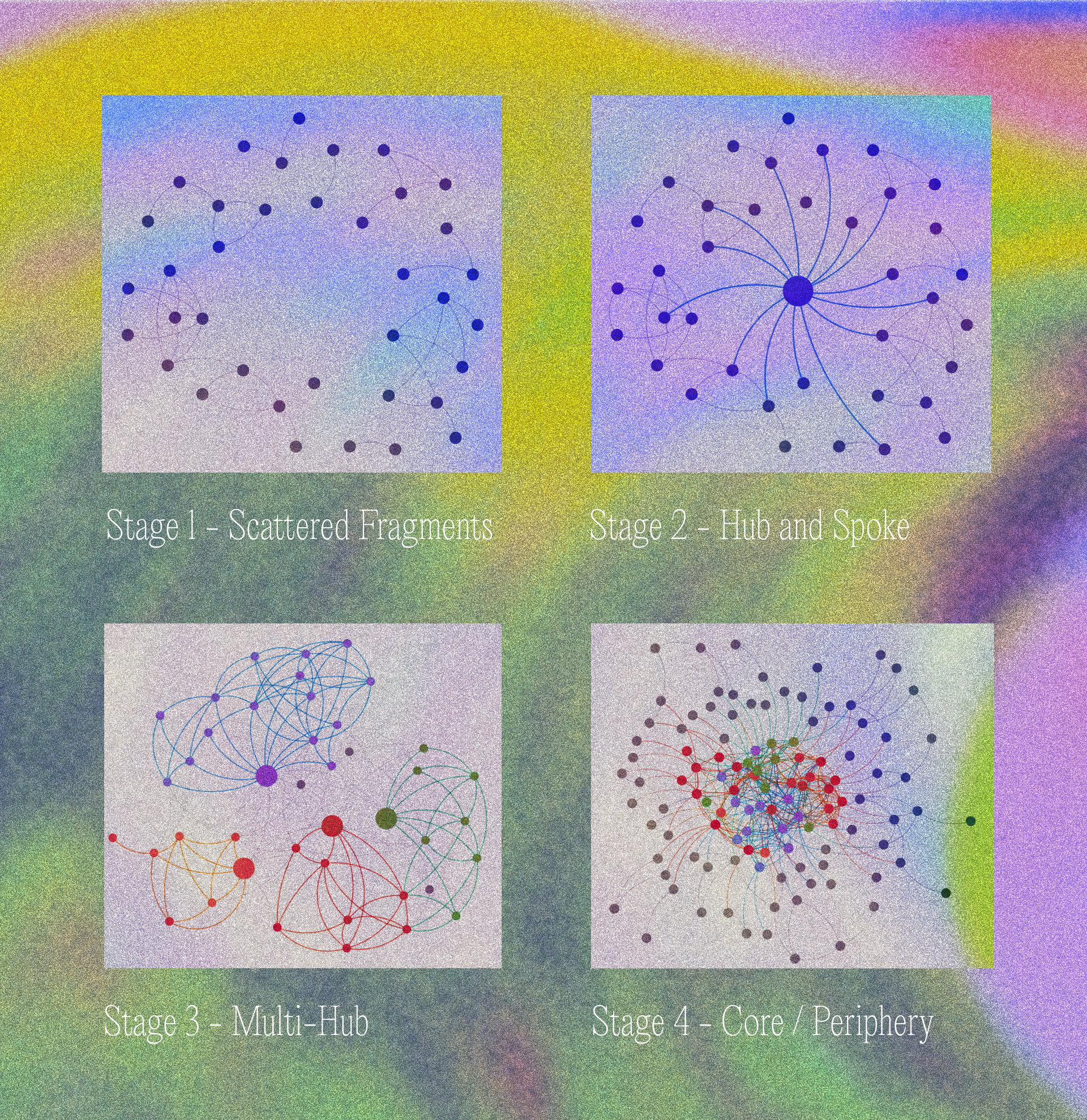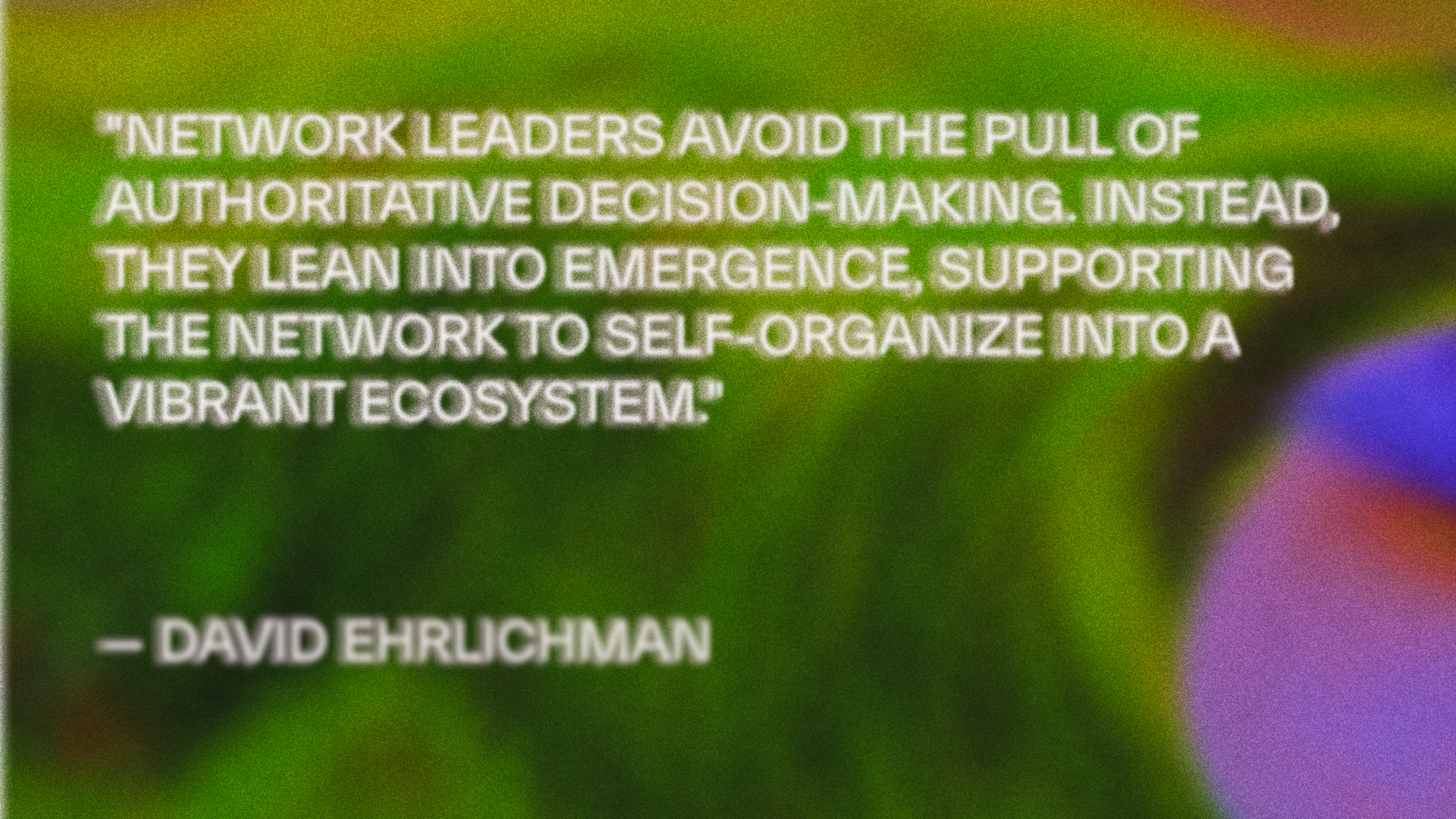- Ariel LeBeau
- Austin Robey
- David Blumenstein
- David Ehrlichman
- David Kerr
- Devon Moore
- Dexter Tortoriello
- Drew Coffman
- Drew Millard
- Eileen Isagon Skyers
- FWB Staff
- Greg Bresnitz
- Greta Rainbow
- Ian Rogers
- Jessica Klein
- Jose Mejia
- Kelani Nichole
- Kelsie Nabben
- Kevin Munger
- Khalila Douze
- Kinjal Shah
- LUKSO
- Lindsay Howard
- Maelstrom
- Marc Moglen
- Marvin Lin
- Mary Carreon
- Matt Newberg
- Mike Pearl
- Mike Sunda (PUSH)
- Moyosore Briggs
- Nicole Froio
- Ruby Justice Thelot
- Simon Hudson
- Steph Alinsug
- The Blockchain Socialist
- Willa Köerner
- Yana Sosnovskaya
- Yancey Strickler
- iz

Mon Oct 25 2021
Decentralization, as a concept, is having a unique moment. For anyone involved in Web3 projects, it’s a common refrain: guidebooks on how to reach a state of sufficient decentralization become prized roadmaps, and arguments persist about what the word even means. Some might argue that disagreements about decentralization are a necessary part of a decentralized future.
Outside of the blockchain world, examining the nature of decentralization as a concept has a long history, from clinical trials to geopolitics to the administration of public services. The promise of replacing top-down power structures with more fair and impartial models should be intriguing to anyone who thinks about systems and how they work.
Systems strategist and network coordinator David Ehrlichman’s new non-fiction book Impact Networks is an exploration of decentralization through the lens of human collaboration; more specifically, it is a practical body of work that is useful for anyone interested in how decentralized networks of people can work together to solve large-scale problems. The book is set up as a primer that guides the reader through understanding network models, how to foster their growth, and different ways of facilitating decentralized collaboration. In the following excerpt, Ehrlichman lays out some basic principles about what leadership looks like in successfully decentralized networks.

Part 1: The Evolution of Leadership: From Hierarchies to Networks
Once you begin to recognize the webs of relationships that make up our world, you will never go back. This is the network mindset shift. To adopt a network mindset is to embrace the reality that everything is connected—that we affect one another in profound and often-unexpected ways.
When you embrace a network mindset, you stop working in isolation. Instead, you turn your focus toward cultivating connections, strengthening flows, and sharing resources. With this shift, leaders become adept at noticing how their efforts are related to others, and it becomes easier to identify opportunities to coordinate with others. Rather than trying to scale up an individual organization, building an increasingly large and efficient machine, they seek to scale out. The potential of what we can create increases significantly when all types of resources—leadership, money, and talent—are leveraged across systems toward a common purpose.
This is what’s happening in DAOs all over the world. It is a transformational shift in how we organize. And it’s creating a new generation of leaders who work in decentralized ways.
This three-part blog series will start by looking at the evolution from the hierarchical paradigm to decentralized, networked-ways of doing things, expand on the key leadership roles that are needed in decentralized work, and conclude with an overview of the core principles of network leadership.
The Hierarchical Mindset
The dominant organizational framework in the world today is a hierarchical, command-and-control model where decisions are made by a small group of leaders and passed along to those lower in the chain of command. Hierarchies are preferred by many for their predictability and stability—people know what they can expect, and activities can be forecast well in advance.
At the same time, hierarchical structures are limited in their ability to address complex and multifaceted issues. Whereas networks work from the inside out, with ideas and actions emerging from the conversations happening between individuals, hierarchical structures operate from the top down, with powerful leaders sending instructions and resources to those lower in the hierarchy through layers of management. In the face of complexity, this structure turns into a bottleneck.

While a hierarchy is usually depicted as a pyramid, we can also visualize it as a rigid hub-and-spoke network. Imagine the CEO as the central node, with the links representing their relationships to their direct reports and their direct reports having links to additional direct reports, and so on. With each link, you move farther away from the central hub.
Being near the top of a hierarchy (or the center of a rigid hub-and-spoke network) has its benefits—you have more control and are more likely to be needed. It also has its costs. The more you control, the less people are able to self-organize to advance work on their own. The more you are needed, the less resilient the system is in the event that you are unavailable. The more you preserve the hierarchical structure, the more you create a bottleneck and constrict the free flow of information. Being critically needed and in control is a double-edged sword.
This is a big part of why hierarchies have a hard time adapting quickly to changing circumstances. When the organizing structure is predefined and inflexible, there is little room for collective discovery, spontaneous collaboration, and unforeseen innovation. Hierarchies are good at achieving the specific ends they were set up to achieve, but they are not well suited to addressing complex issues that have no readily apparent solution. The same is true of hub-and-spoke networks; you might think you’ve created a decentralized organization, but if one person remains the critical hub in the middle, all you’ve done is recreate the pattern of a hierarchy.
The most effective collaborative efforts instead feature a highly connected network organized around shared purpose and relationships, with flexibility embedded in the network’s structure. These networks tend to evolve along four stages—from scattered fragments, to hub-and-spoke, to multi-hub, to core/periphery, as shown below. In the following posts in this series I will explore in more detail how network leaders can cultivate highly-interconnected, decentralized organizations without getting stuck at the hub-and-spoke stage and inadvertently creating just another hierarchy.

Network Leadership
One of the main implications of shifting to a network mindset is in how we think about leadership. Hierarchical leadership is directive and consolidates control. Power is centralized and is to be sought or guarded. In contrast, network leadership is facilitative, generating connections between others and decentralizing power such that people can organize without a top leader. While hierarchical leaders focus on the quantity and quality of their own relationships with others, network leaders focus on increasing the quantity and quality of relationships between others.

The shift from a hierarchical mindset to a network mindset also changes the way we think about strategy. Hierarchical systems commonly adopt plan-and-deliver strategies. This can be seen in the ritual of developing long and detailed strategic plans. But complex situations defy the cause-and-effect relationships that strategic plans specialize in. Addressing complex issues requires experimentation, learning, and flexibility. Deliberate and emergent strategies are both necessary to balance planning with adaptation.
When groups of people share their different perspectives and blend their ideas together, new possibilities arise that could not have been predicted. Just as our brains exhibit extraordinary characteristics far beyond what we could predict from studying the electrical impulses of their individual neurons, and in the same way that the many surprising properties of water could not be predicted or understood by only looking at hydrogen and oxygen molecules on their own, networks cannot be understood by looking merely at their individual parts. It is in the interactions between the parts that something new is created. This process is, in a word, emergence. Emergence is the quality that gives networks their exponential potential for impact.
To tap into the boundless creativity that emerges when people from different parts of a system interact with one another, network leaders avoid the pull of authoritative decision-making. Instead, they lean into emergence, supporting the network to self-organize into a vibrant ecosystem—full of connection, learning, and collaborative action—without unilaterally controlling its path. Self-organizing happens when people are invited to notice and act on opportunities based on their own judgment. When people are free to try new things, initiate experiments, and connect and collaborate with others from across the system. Whereas opportunities for leadership in a hierarchy correspond to one’s position in the structure, in a network, opportunities for leadership arise everywhere. Everyone has the agency to step in and advance projects they have energy for. As a result, responsibilities for the outcomes of the system are shared, and people recognize that they can have a hand in shaping the future. This is a big change from most hierarchical systems, where a small leadership group is entrusted to make sense of what is happening and plan out what comes next.
There is a common misconception that self-organization means something like spontaneous self-generation, but self-organization does not happen randomly or by sheer luck. Instead, the self-organizing potential of a network is fostered by network leaders who cultivate the conditions for connection, learning, and action to arise. These leaders also ensure that this all happens not in a vacuum but in relationship to a clear purpose that people can orient toward. As a result, while the actions of the group are likely to be quite varied in strategy and scope, they remain coherent and mutually reinforcing.
Fundamentally, the role of network leaders is to help diverse groups find the shared purpose that unites them, to foster self-organization, and to coordinate the actions that emerge so that they inform and reinforce one another. We may not be able to predict how to best address complex challenges, but through the emergent and self-organizing capacity of decentralized networks, we can learn our way into the future, together.
Excerpted from Impact Networks by David Ehrlichman; now available in print, as an audiobook, and as an ebook wherever books are sold.
Graphics by Fiona Carty.


